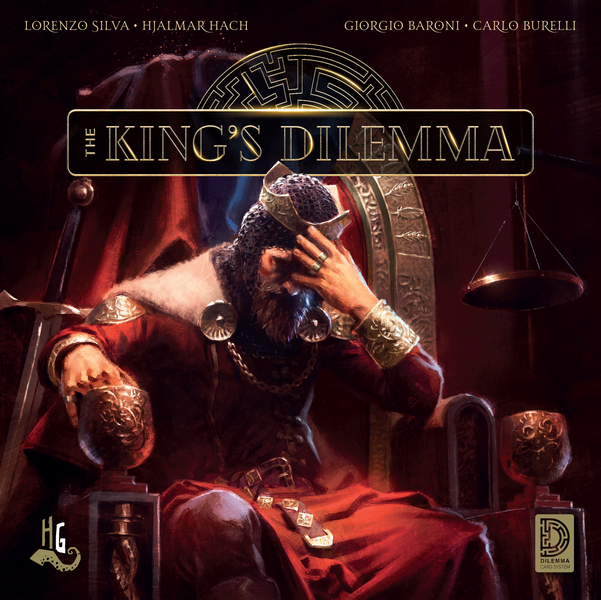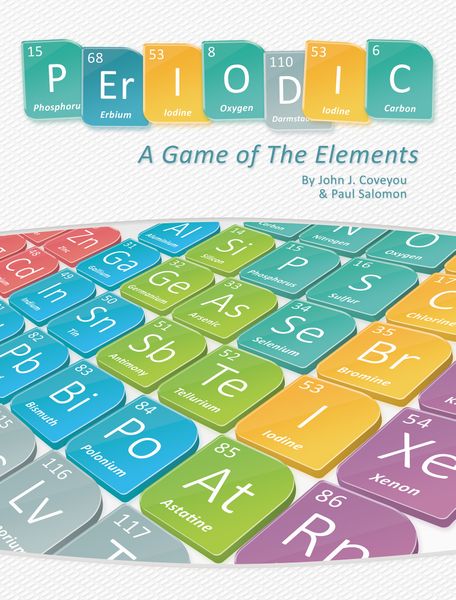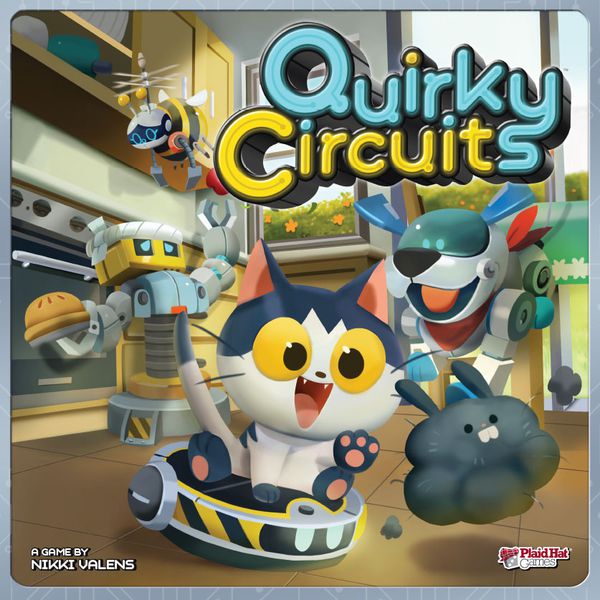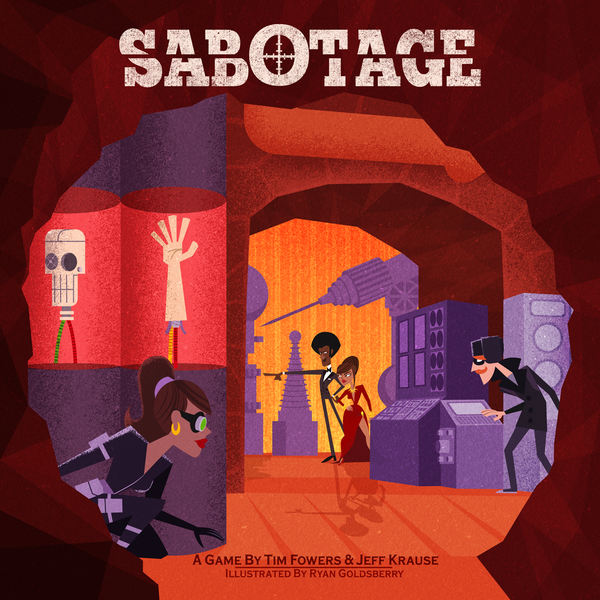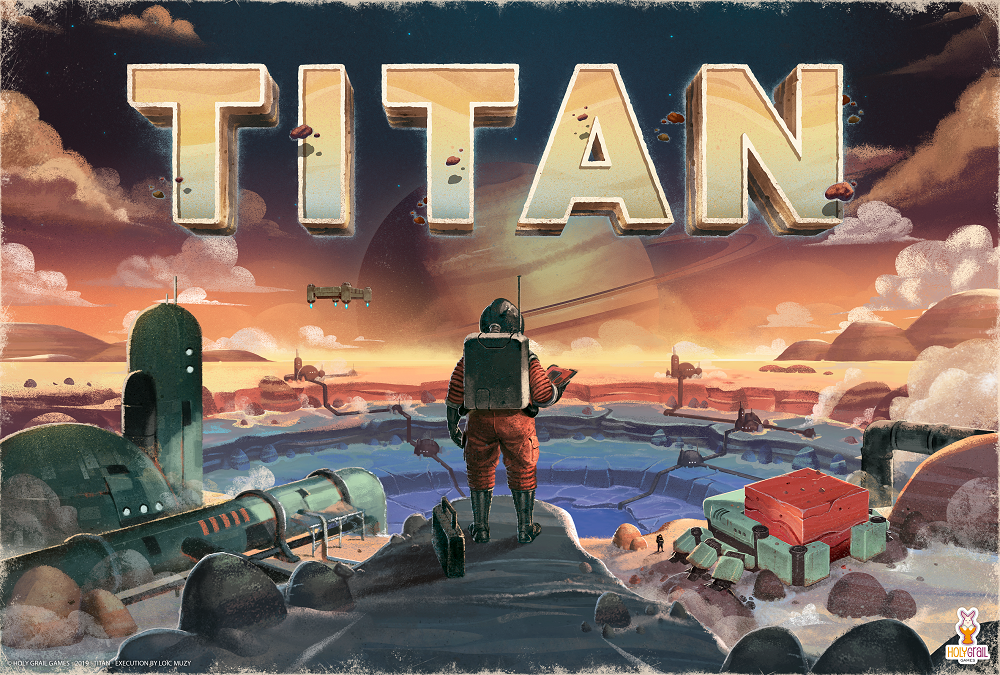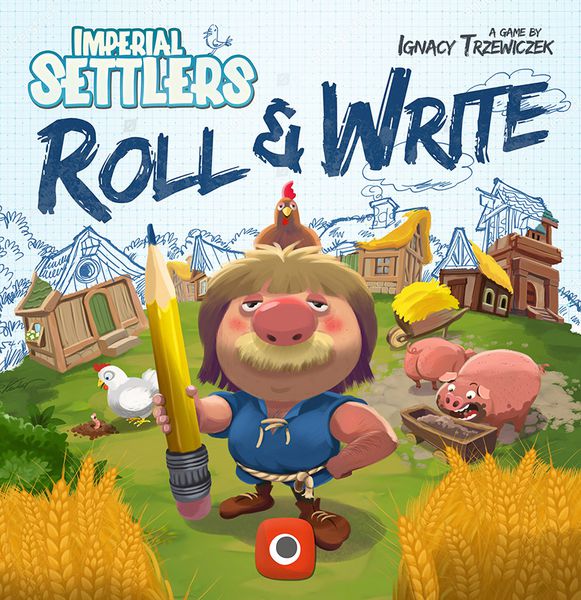Gen Con 2019 approaches! If you follow even the most modest of board game media content, it’s hard to have not heard that the largest board game convention in North America and its much touted Best Four Days in Gaming tagline is right around the corner, just waiting to unleash a torrent of tabletop goodness upon central Indiana. And if you’re one of the more avid followers of the hobby, by now you’ve probably seen all sorts of preview videos, press announcements, early playthroughs, and a bevy of Must Get lists thrown around more than a frisbee on a college campus.
Today, I’m going to add one more piece of of gaming goodness to the mix with our own annual preview list. Why release it mere days before the convention launches? Well, for one, our analog life has been rather chaotic the last few months (albeit in a good way). But also, compiling titles for such a concise list is no easy task if you want to be thorough. This year’s massive Indy-based gaming event is boasting over 600 unique titles on the formal BGG preview list – more than half of which are standalone games actually for sale.
That’s…a lot of cardboard.
 With all of those games jostling for your attention, your shelf space, and your hard earned dollars, it can be positively overwhelming for the average consumer to process, let alone the enfranchised gamers that live for such things. For most people, trying to absorb that much information is overwhelming. Where does one even begin trying to navigate such a massive array of potential options? What should you prioritize, and what is worth passing on?
With all of those games jostling for your attention, your shelf space, and your hard earned dollars, it can be positively overwhelming for the average consumer to process, let alone the enfranchised gamers that live for such things. For most people, trying to absorb that much information is overwhelming. Where does one even begin trying to navigate such a massive array of potential options? What should you prioritize, and what is worth passing on?
It can be daunting at the best of times, for sure. But it also doesn’t help if you keep seeing the same names over and over again.
By now, with Gen Con mere days away, you’ve seen a litany of outlets talking about which New Hotness to check out – from marquee titles, to what’s topping the BGG popularity meters, to which games are working their way through social media buzz.
Today’s list isn’t going to just be another mention of the top five most popular games or the five likely go get the most attention.
The reasons for that are twofold. First, it’s simply not helpful for you to hear the same information you’ve probably been inundated with from numerous other places. Second, and more pertinently, putting out yet another preview list that only focuses on the same handful of titles as everyone else does no service to the literally hundreds of other games being shown off at Gen Con. So, yes, we could sit here and talk about Era and Pipeline and Sierra West and Watergate and Sushi Roll and so on. But I won’t. They don’t need my help to get attention and they’ll do quite fine without my mention here.
Instead may I present a short list of games reflecting Gen Con 2019. The first series are a handful of newly released titles that I’m personally interested in checking which aren’t guaranteed to be climbing the buzz meters and may or may even not show up on a lot of other lists. That is followed up by a pair of unpublished games to keep an eye on, and then, as per annual tradition, my two convention predictions. The first is the title I feel that has been way overhyped for what it is, ultimately leading to a game with overwrought or unjustified expectations. The second is my guess at the convention’s Sleeper Hit – a game getting relatively little attention going into the convention that will jump in popularity afterwards.
So, with that, let’s run down our Off-Radar Games for Gen Con 2019.
New Releases
Gen Con is nothing if not a smorgasbord of shiny new games to entice your eyes, hearts, and wallets, and even the most picky gamers are bound to find a few titles to interest them along the way. Here are a few titles that have caught my attention for one reason or another.
Honorable Mentions: Amul, Dreams of Tomorrow, Hats, MegaCity: Oceania
The King’s Dilemma
Publisher: Horrible Games / Luma Games | Players: 3-5 | Play Time: 45-60 Minutes
While most of the legacy game attention at this year’s Gen Con will undoubtedly be focused on Machi Koro Legacy, Horrible Games is unveiling one that is about as opposite as you can get. It’s dark, gritty, and largely player-driven as it’s all about wheeling-and-dealing over events that branch and evolve based on which outcome ends up with the most votes each round.
In other words, a legacy-based negotiation game, the combination of which I find fascinating.
The King’s Dilemma is about making tough choices, yes, but where those choices have lasting, even damning consequences. The appeal comes from trying to navigate the real-world-adjacent complexities of your kingdom but there often isn’t an optimal, clear-cut best choice. The game puts forth a darkly compelling narrative experience unlike any other legacy game before it, where you must debate, bribe, and sway the table your way. As a ruling aristocrat, you must also contend with balancing what’s good for the proletariat versus what’s good for your ruling house – which often will be at odds with one another.
The King’s Dilemma is an aptly named game that underscores what it would be like to actually rule a Medieval style kingdom. Bad things will happen, you can’t help everyone, and there is no perfect outcome. How your kingdom will fare depends solely on the whims of its rulers, and the only way to find out for sure is to play it through.
Periodic: A Game of The Elements
Publisher: Genius Games | Players: 2-5 | Play Time: 45 Minutes
There are few things more emblematic in a science classroom that of the Periodic Table of Elements. Arranged in a highly organized, systematic fashion – though one that still seems bizarre to most people most of the time – the periodic table not only allows us to position the known elements of the world into (mostly) cohesive groupings, but it does so in a very iconic and educational way. It’s a helpful reference guide to understanding the fundamental building blocks of the universe while simultaneously being visually appealing and super nerdy at the same time.
Now, and hear me out, what if you made a game that used it as the board? Because that’s exactly what Periodic does.
Genius Games has made a name for itself crafting a catalog of science-themed games that are equal parts education and entertainment, which is always easier said than done. Periodic is the latest in the series. In what is essentially a set collection game of trying to amass specific elements to complete goal cards, players move around the periodic table trying to get from one area to the other. Doing so requires some thought and planning though as you must contend with gaining or losing energy as you move through the elements. Because the laws of energy.
It’s a fairly simple and straightforward game, and much like Genius’ other games, doesn’t require any foreknowledge of the subject matter to enjoy. I’m fully aware it only scratches the surface of its atomic potential here, but that someone went and made a game out of the periodic table is enough to make me want to scope it out.
Quirky Circuits
Publisher: Plaid Hat Games / Asmodee | Players: 2-4 | Play Time: 15-30 Minutes
Plaid Hat Games has two notable releases at this year’s Gen Con, and while I have no doubt both will garner a fair bit of attention, my focus is on the seemingly less advertised of the two. A game that combines cooperative gameplay and programmable actions with a delightfully lighthearted premise. A game called Quirky Circuits.
In Quirky Circuits, players work as a team to program an adorable little robot friend so they can navigate through scenarios which get progressively more difficult. This is accomplished by each person contributing a movement card towards its actions each round, with the order of them hitting the table the order they resolve.
All of which is easier said than done. For the catch in all of this is everyone’s programming cards are contributed face down, which means you can’t simply make your decisions based on the exact card preceding it. Nor can you overtly ask what your teammates played. Instead, through discussion and inference, you have to trust that your teammates are on the same wavelength when deciding which movement cards to use and in which order.
But of course, like any entertaining programming game much of the entertainment value comes from watching your carefully laid plans go completely sideways. Which in this game they most certainly will. (Hey, it isn’t called Quirky Circuits for nothing.) With appealing production quality and a goofy-yet-charming concept befitting widespread appeal, checking this one out has been part of my programming for many months now.
Sabotage
Publisher: Fowers Games | Players: 2-4 | Play Time: 60-90 Minutes
With the myriad game options coming out at Gen Con 2019, let alone the number of games in general, the ones that stand out most to me at this point are those that either do something familiar well or those that do something different. Sabotage, the second Kickstarter-funded game on this list, appears to be doing both. On the one hand, this game offers many well-established mechanics, from team-based gameplay, to hidden movement, to programmable terms, to asymmetric player powers. What makes Sabotage particularly intriguing is that it incorporates all of those together. At once.
Yes, Sabotage is a team-based, hidden movement game with programmable turns. Which most certainly means I need further debriefing on this wily combination of mechanics.
In this spy vs villain game, the spies are trying to save the world and the villains would really, really prefer that you just let their evil plans come to fruition. Separated via divider (think Captain Sonar), a number of dice are rolled each round and then it’s up to the teams to allocate the listed values to different actions. The spies must try to avoid getting caught too many times, whereas using deduction and revealed information, the villains must figure out exactly where they are hiding on the game’s 4×4 grid.
Fowers Games has had a knack for interesting lightweight espionage-style games, and I’m really curious to see if Sabotage will be continuing that trend. The initial dossier before me suggests promise to that end.
ShipShape
Publisher: Calliope Games | Players: 2-6 | Play Time: 20-50 Minutes
Not every game needs to have a deep wellspring of theme or complexity to be appealing. In many cases, a game’s simplicity is more of an asset than a liability. ShipShape is an excellent example of this. So climb aboard in a lighthearted bid for treasure!
In ShipShape, players are a bunch of pirates reputable sea captains carrying as much gold, cannon, and other contraband nothing else on your voyages to and from nearby ports. All of this is represented via tabbed cargo container segments, assembled to reflect your ship’s hold. Over the span of three rounds, players use their expendable precious crew cards to claim new segments, which are layered atop one another in a vertical fashion. Depending on how you orient them, different pieces may cover up tabs further below – which could help or hurt your final payout depending on what’s being obscured. When ShipShape ends, what you score in terms of cargo is only what you can see by looking straight down into your hold. This adds an excellent tactile sensation and added spatial challenge to an otherwise straightforward auction game.
Is ShipShape the deepest of games out there? No. Does it nevertheless appeal to me by mixing bidding, stacking, and spatial orientation, all in a family weight package? Absolutely. You can be sure I’m setting sail for Calliope for this one.
Unreleased Titles
Gen Con may be known as the main North American gaming event for brand new releases, but as an expo style convention it’s also a hotbed for game pitches, demos, and signings. Beneath the glitz of all the new releases, there also exists a veritable hotbed of prototypes – not to mention a perfect means for publishers to showcase upcoming games to entice you down the line.
While there are a couple dozen unreleased games I’ll be making a concerted effort to check out, these two stand out the most for me.
Honorable Mentions include: Aquatica, Chocolate Factory, The Isle of Cats, Mechanica, Sleeping Gods
Titan
Publisher: Holy Grail Games | Players: 2-4 | Play Time: 60-120 Minutes
I have to admit: I’ve been a little irrationally fixated on Titan for reasons I can’t quite put my finger on since I first stumbled upon word of it around the time of Gen Con last year. Perhaps it’s because of the game’s circular board, its route building, resource management nature, or the fact that I’m a sucker for a good worker placement game. Probably all of the above. Nevertheless, when I heard that Holy Grail Games will not only have a presence this year, but that they’ll also be showing off Titan, it immediately went on my (then) short list of prototypes to check out.
The gist of Titan is straightforward: players are members of an interstellar mining corporation sent to the Saturn moon of Titan. Your goal is to extract and store the most valuable resources you can get your hands on into your ship as to earn the most money at the end of the game. The more valuable resources are buried further down than others, which is reflected in the game’s multi-tiered three-dimensional circular board (seriously, that alone has my attention). Extracting resources requires establishing pipeline routes as well as connections to mining equipment your company has so generously provided, but placing those have to be made carefully, as once operational everyone has access to them.
From the outset, Titan has all of the trademark qualities of an amiable mid-weight Euro, and after a year of inspecting it from afar, I’m sure to be rocketing over to check it out first-hand.
Yggdrasil Chronicles
Publisher: Ludonaute / Asmodee | Players: 1-5 | Play Time: 90 Minutes
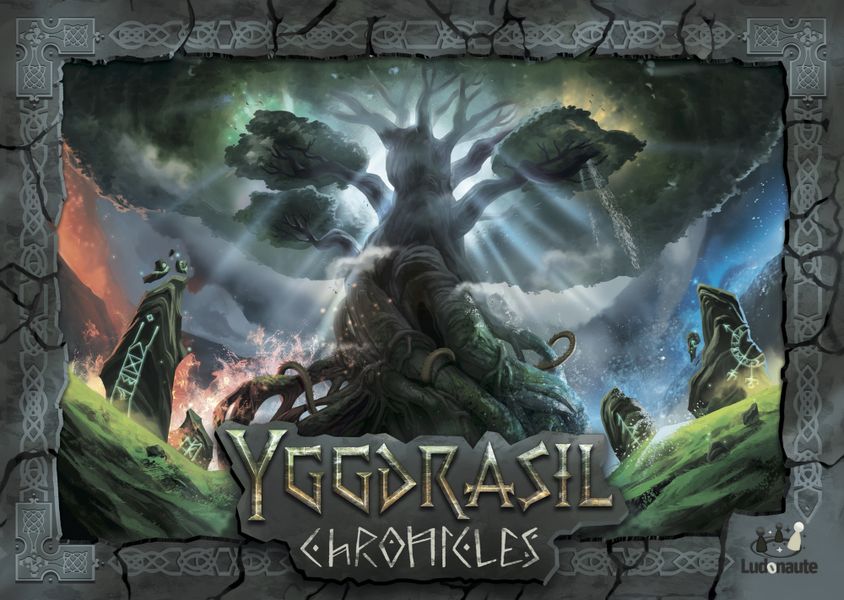 Everyone owns certain games that come with a personal anecdote to them, and for a couple of our friends, this includes Ludonaute’s imaginative, flavorful, and down right difficult 2011 game Yggdrasil – as it was their very first co-op. In it, players are different Norse gods attempting to fend off a number of monsters seeking to destroy Yggdrasil, the World Tree. Over a series of rounds, players visit the different realms, each of which has the potential to aid the group stave off their enemies. Yggdrasil went on to earn a rightful reputation for its artwork, cooperative gameplay, and yes, how damn hard it was to actually win. Not quite Ghost Stories level, but pretty close. Alas, it went out of print in 2012 save for a small revival print run in late 2018, making it a rather difficult game to come by these days.
Everyone owns certain games that come with a personal anecdote to them, and for a couple of our friends, this includes Ludonaute’s imaginative, flavorful, and down right difficult 2011 game Yggdrasil – as it was their very first co-op. In it, players are different Norse gods attempting to fend off a number of monsters seeking to destroy Yggdrasil, the World Tree. Over a series of rounds, players visit the different realms, each of which has the potential to aid the group stave off their enemies. Yggdrasil went on to earn a rightful reputation for its artwork, cooperative gameplay, and yes, how damn hard it was to actually win. Not quite Ghost Stories level, but pretty close. Alas, it went out of print in 2012 save for a small revival print run in late 2018, making it a rather difficult game to come by these days.
With all of that in mind, you bet that we’ll be checking out Ludonaute’s spiritual successor at Gen Con, Yggdrasil Chronicles. Chronicles plays out the same idea of trying to stop the Big Bads from destroying the world. This particular version ups the ante significantly, however, by introducing variable endgame goals via a campaign mode, increased player agency, deeper flavor integration, and perhaps most noticeable of all, displaying Yggdrasil and the Nine Realms locations in the form of a 3-D tree.
And if that’s not enough, they also added a hard mode. For when you really want to suffer.
Between the upgrades, innovation, and a bit of nostalgia, all of this makes Yggdrasil Chronicles one of our Must See demos of the con.
The Overhyped
For all the titles listed at Gen Con, most come and go without a ton of fanfare. Only a small percentage get widespread attention. Sometimes this is by mere word of mouth, but often it’s due to a combination of effective publisher marketing, name brand recognition of the designer or publisher, and in small doses, the media arm of the hobby helping hype it up.
An overhyped game doesn’t necessarily mean the game is bad. Rather, it just means that due to all of its inflated attention, it has reached a state where it can’t possibly fulfill the level of unrealistic expectation that’s been bestowed upon it. My pick for the Overhyped Game of Gen Con 2019 is:
Imperial Settlers: Roll & Write
Publisher: Portal Games | Players: 1-4 | Play Time: 30 Minutes
This category is always a little tough to write, because while I think it’s a fair and useful critique to state when a game is incapable of matching the level of attention bestowed upon it, I have to be careful to avoid insinuating that the game itself is bad solely because of that fact. I’m not. I’m sure Imperial Settlers: Roll & Write will find a happy home with many dice and paper enthusiasts. But will it live up to its own vaunted namesake? No, sadly not.
It’s also unfair to believe it would simply because it’s using familiar source material. Imperial Settlers is an excellent game, bursting with strategic options and often painful tactical decisions to make. It would be presumptuous believing a distilled version is automatically going to provide the same experience. But many will assume so anyway. Which is significantly going to skew people’s expectations. With this game you’re spending several rounds rolling dice, then using those dice to erect buildings that score you points and combo with one other for added effect, just like the base Settlers. Only with less variety.
Look, I get it: roll & write games are having A Moment. Their popularity has been on the rise over the last couple years and the industry is catching up (and cashing in) on demand, with every publisher trying to come up with their own title to that end. Not only is Portal Games not unique in this respect, the IS: Roll & Write isn’t even the only one releasing at Gen Con. But where most others come from a blank slate, this one brings with it some gameplay assumptions that it simply (and unfairly) can’t live up to.
Innovation is a key component to an interesting roll & write game, and this one certainly attempts a laudable goal: converting an extensive card-based game into a sheet of paper. Yet when the full-blown Settlers only takes 15-30 minutes longer to play and whose design is on the complex end of the R&W spectrum, many fans of the genre’s quick and simple nature may find this one a tad below par.
The Sleeper
Despite the efforts of the board game industry to do so, no game is guaranteed to be a hit. No matter how much industry knowledge, market trend info, or media pull you have, there is no magic bullet that will ensure any given game is going to be received exactly as you expect. Some games are predicted to become massively successful only to fail horribly, whereas others come on to the scene with little notice and take off like mad. The Sleeper pick focuses on the latter.
The Sleeper is a bit of an exercise I started a number of years ago in trying to predict what I thought was a game with serious potential that no one was actively paying attention to going into the convention. This started with guessing the sleeper hit of Essen Spiele since we don’t get to go but has since evolved to where I do it for any convention where a sufficiently decent number of titles are released.
Yet while I’ve historically had good luck predicting ones for Essen, Gen Con has always proven trickier.
But let’s not let that stop us, shall we? We won’t know for sure until at least a month or so after the convention if this one holds up, but at any rate, my educated guess for the Gen Con Sleeper will be:
Mental Blocks
Publisher: Pandasaurus Games | Players: 2-9 | Play Time: 10-20 Minutes
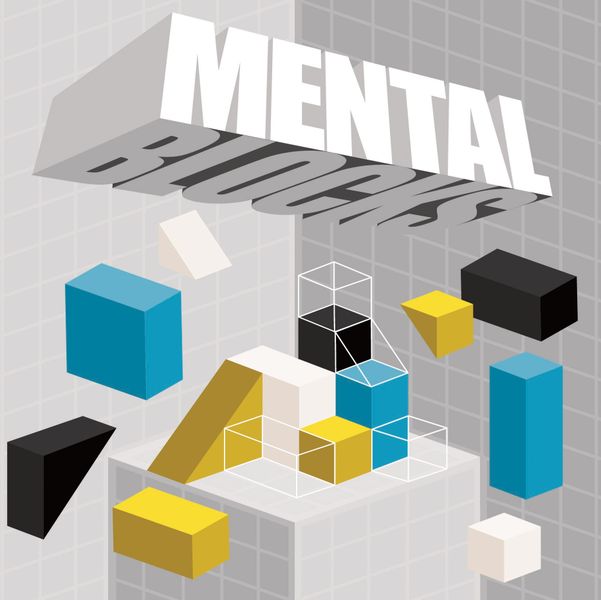 Historically the Gen Con Sleeper tends to be a game that is accessible, replayable, affordable, and quick. Mental Blocks covers all of these factors and then some. Thanks to its abstract nature, concise premise, and ability to support up to 9 people, this is a game that’s just tailor-made to drop on the table whenever a group has a few minutes of downtime.
Historically the Gen Con Sleeper tends to be a game that is accessible, replayable, affordable, and quick. Mental Blocks covers all of these factors and then some. Thanks to its abstract nature, concise premise, and ability to support up to 9 people, this is a game that’s just tailor-made to drop on the table whenever a group has a few minutes of downtime.
Mental Blocks also provides a table presence that’s hard not to become intrigued by. When a half dozen people are intently staring at a weirdly amassed pile of blocks on a table, you kind of want to know what the deal is.
The premise is simple: your group must cooperatively assemble a group of oversized blocks into a specific pattern. This is easier said than done, however, as each player only knows one angle of that completed pattern – which means you need to rely on the efforts of your team. And if that wasn’t enough, throw into the mix restrictions such as time limits, a possible hidden traitor, the inability to talk, and more. With over 50 different challenges to puzzle through, there’s a lot of game packed into a fairly unassuming package.
While Pandasaurus will have its hands full debuting several new titles, Mental Blocks could squeak by relatively unnoticed, which would be a shame. In the quest to find games that can handle large groups but aren’t of the traditional party game variety (well, it’s a perennial quest of ours at least), Mental Blocks offers an enjoyable group puzzle that’s just the right mix of social engagement, cerebral stimulation, and a dash of good-natured frustration. All of which has the potential of people talking about this one long after the convention comes to a close.

